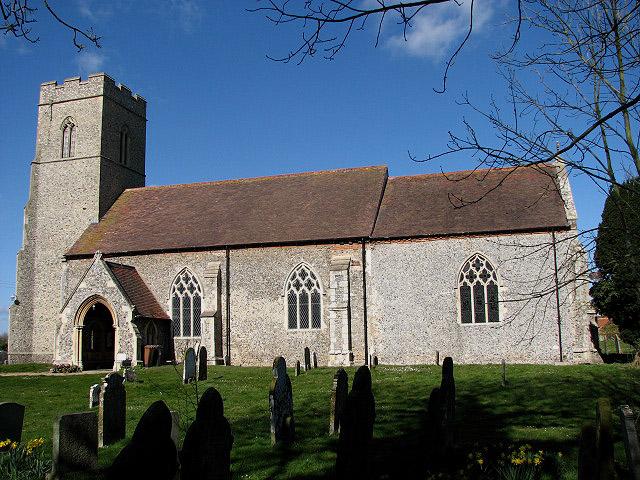St Margaret
Thorpe Market, Norfolk
Built in 1796 on the site of an earlier medieval church by the first Lord Suffield.

Nestled in the countryside, there is, sadly, no historical truth in the legend that the two churches of Antingham in one churchyard were built by two sisters. The pretty church of St Mary and the atmospheric ivy clad ruin of St Margaret.
Antingham, Norfolk
St Mary’s dates mainly from the 14th century 1330-1360, with a later Victorian porch built in 1882 when the previous one was blown over in a storm.
Inside the church the space created by the north and south nave walls, running continuously and uninterrupted into the chancel, creates a beautiful simple space. The font is of purbeck marble, no later than 1225, and may have been moved from St Margaret's. The square west tower contains a single bell dating from 1722.
Significant repairs were undertaken in the 18th century, when the 3 bells from St. Margaret’s were sold to finance the repair of the roof and tower. A further restoration was undertaken in 1864 by the Revd John Dolphin, a first class cricketer, who was rector of Antingham for 59 years.
There is some fine preRaphaelite glass in the south chancel window, of 1865, which shows Mary Magdalen and Martha on either side of Our Lady. Mary Magdalen was designed by William Morris, the Virign Mary by Burne-Jones and Martha by Dante Gabriel Rossetti. Burne-Jones was also responsible for the glass in the north chancel window, with angels playing on bells, based upon designs of 1862 for St Michael’s in Brighton. Also dating from the 1860s is the east window with glass by J&J King of Norwich.
In the nave there are a number of rather splendid 16th century brasses and floor memorials. Of particular note, is a significant memorial brass to Richard Calthorpe who died in 1554 'in the first and second years of King Phillip and Queen Mary' and his wife, Anne, who died in 1562. He is shown in full armour; his wife’s brass has been lost but below an inscription is a plate depicting their 19 children.
St Margaret’s is a preConquest foundation and the 11th century nave may incorporate earlier elements. The church was modified substantially in the 14th century, at the same time as the construction of St Mary’s in the same churchyard. St Margaret’s church was abandoned in the 17th century and is now an atmospheric ruin.
Thorpe Market, Norfolk
Built in 1796 on the site of an earlier medieval church by the first Lord Suffield.
Paston, Norfolk
Medieval 14th century church with nationally significant wall paintings and a rich historic and social heritage linked to the Paston Family of Paston Letters fame.
Crostwight, Norfolk
Isolated tranquil medieval rural jewel with 14th century wall paintings.